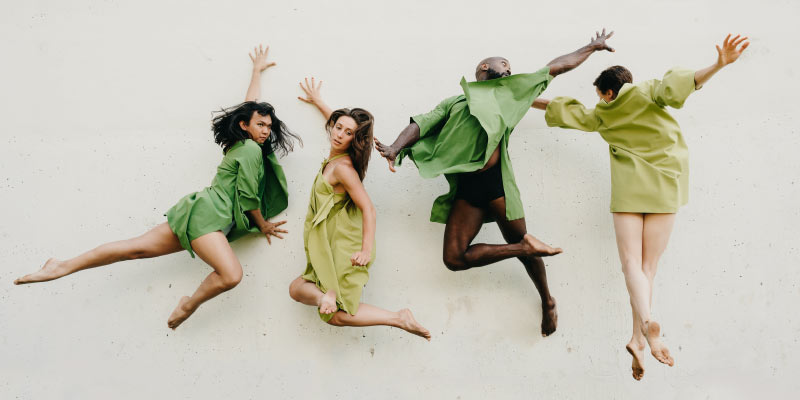
Nelson Institute dean, Paul Robbins will be adding thespian to his long list of professional accomplishments as he joins The Seldoms for their new multimedia piece, GRASS. Utilizing text, dance, animation, and historical imagery, GRASS will explore how lawns, and specifically turf grass, have been woven into a larger American story of environmental and social ills.
GRASS was developed by The Seldoms’ artistic director, Carrie Hanson, who previously served as the fall 2019, University of Wisconsin–Madison Division of the Arts‘ Interdisciplinary Artist-in-Residence. During that time, Hanson, who is known for her work combining the environment and art, partnered with the Nelson Institute on events and initiatives.
Throughout her residency, Hanson connected with Robbins, author of the book Lawn People:
How Grasses, Weeds, and Chemicals Make Us Who We Are. Hanson was intrigued by the book in which Robbins explores lawns through ecological, economic, and social contexts. Using the book and the recent legalization of marijuana in her home state of Illinois as inspiration, Hanson developed GRASS and asked Robbins to be a part of the production.
“I have always had a keen interest in the environment and have previously created performance works that addressed plastic pollution and climate change. Now with GRASS, the focus is the lawn, its symbolic power, our obsession with it, and why it is neither a harmless nor particularly creative choice, ” Hanson shared. “When I became a homeowner seven years ago, I suddenly had a lawn and I began thinking about how much time and money we pour into our lawns, while at the same time actually thinking very little about the impact of these choices.”
As a homeowner, Hanson said Robbins’ book shaped the way she thought about grass and her lawn. She felt compelled to expand the conversation around turf grass and marijuana while exploring the ways both impact social justice and the environment. This work became GRASS, which includes a video from Robbins as well as Lina Britto, an associate professor in the Department of History at Northwestern, who studies the social history of drugs such as marijuana.
Paul really appreciates language. His book is cleverly written and while some of the material has the potential to be a bit dry, he found a way to write in a compelling way,” Hanson said. “I had also seen Paul speak and he has a sort of performativity in the way he speaks. Paul entertains as well as educates. The Seldoms try to do both, believing that the fields of art and science benefit from collaboration, and that scientific literacy is expanded by creative modes of story-telling including dance.”
Hanson shared that while she has worked with experts and academics on a variety of projects, this will be the first time that an expert is actually a part of the performance rather than contributing through research. Robbins shared that he is thrilled to contribute to GRASS in this way.
“This small thing has always eaten at me because it is mighty. Lawns are everywhere, as a social obligation, a source of profit, a sad waste of landscape, and a symbol of our ecological opportunities,” Robbins said. “To have artists address this question is hugely refreshing; they can move diverse publics the way an academic cannot. The Seldoms deserve kudos!”
This project, which bridges social justice, and the environment will premiere October 14-16, 2021 at 7:30 p.m. at the Dance Center of Columbia College in Chicago. Learn more.